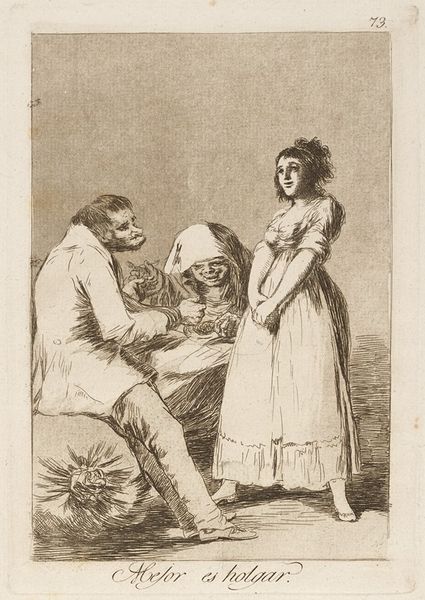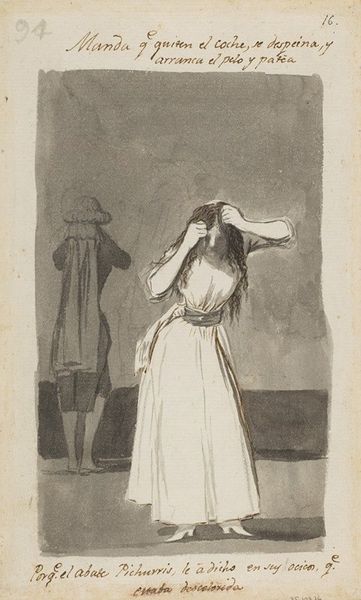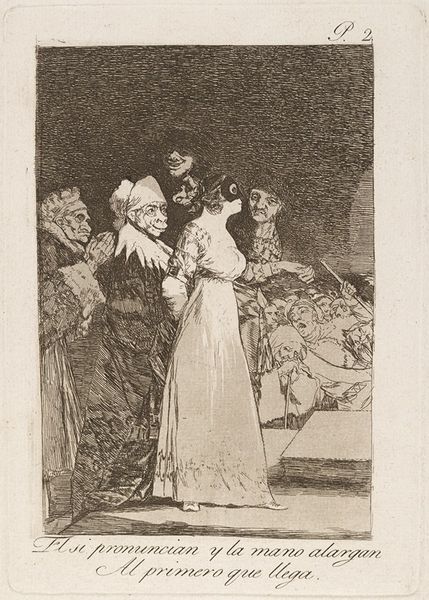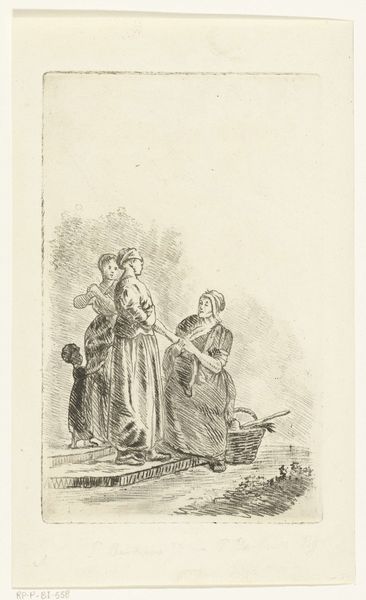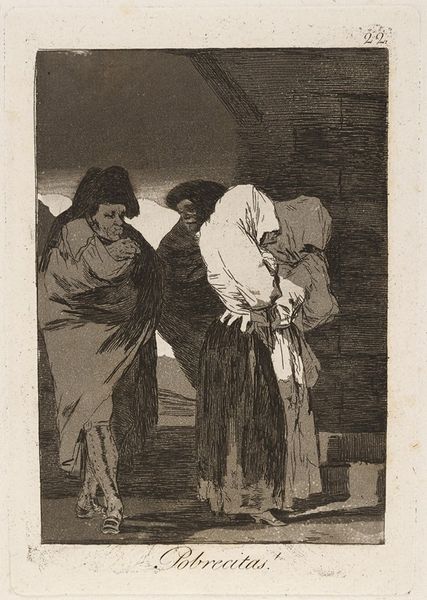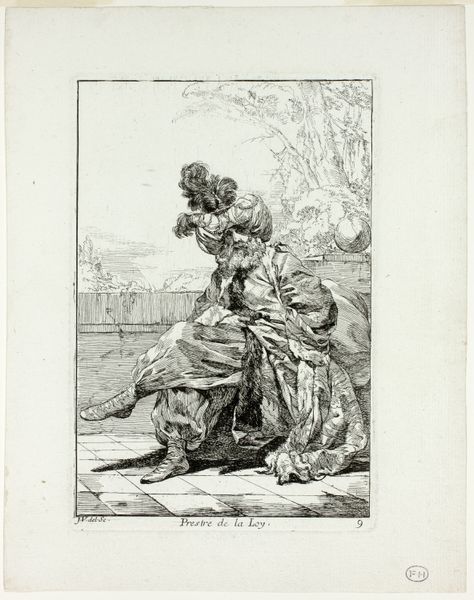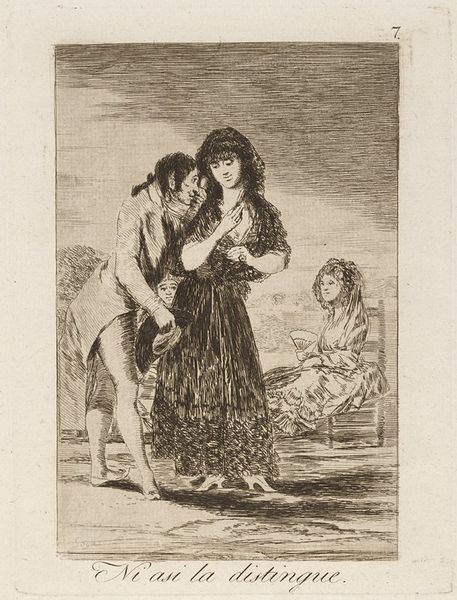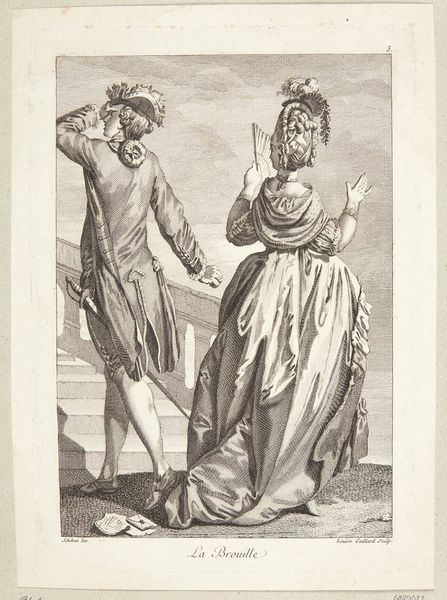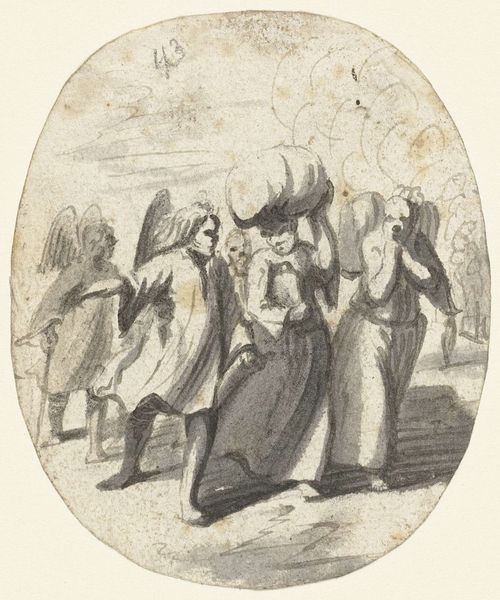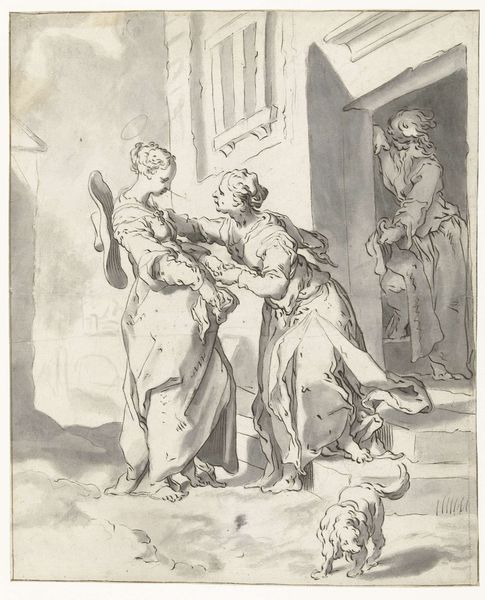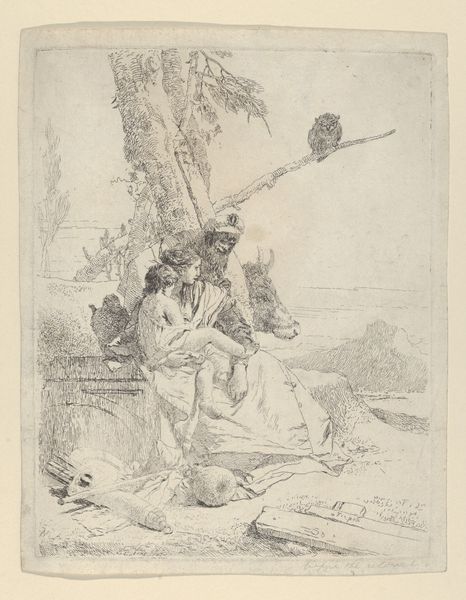
A woman pulling at her hair being watched by a group of figures c. 1812 - 1820
0:00
0:00
drawing
#
drawing
#
narrative-art
#
figuration
#
romanticism
#
history-painting
Copyright: Public Domain: Artvee
Editor: Here we have "A woman pulling at her hair being watched by a group of figures," a drawing made with brown wash by Francisco de Goya, likely from around 1812 to 1820. It's stark, almost theatrical in its presentation of anguish. What's your read on this piece, especially considering its medium? Curator: It's intriguing to consider Goya's choice of wash. Brown wash, readily available, inexpensive… It speaks to a possible urgency in capturing the scene. The sketch-like quality suggests a focus on immediate expression over meticulous refinement. Editor: So, you're suggesting the material itself facilitated a certain raw energy? Curator: Precisely. And look at the depicted labor of emotional display—the woman quite literally tearing at herself. Contrast this physical work with the seemingly idle figures observing her. It brings up questions about the dynamics of spectacle and suffering within Goya's socio-political context. The manufacturing of that suffering almost. Editor: The onlookers do seem… detached. Curator: Do you think their detachment implicates them somehow? Think of the process – Goya selecting this scene, this specific act of displayed private pain being put on paper to be reproduced later as an etching with aquatint. Who consumes this image, and what work is that image performing? Editor: I hadn't considered the labor involved in *viewing* suffering, and its relationship to Goya's process. Curator: The choice of wash might also point to a commentary on ephemeral or easily disseminated material goods and emotional "experiences" being treated the same. Perhaps questioning artistic worth and the social roles these materials end up embodying. What do you make of this interpretation? Editor: It reframes the whole image for me. It's not just about the woman’s pain, but about the system that commodifies and consumes it. Curator: Exactly. By focusing on the material and the means of production, we can excavate deeper layers of social critique embedded within Goya’s work. Editor: This has been really insightful; looking at the work this way reveals much more nuance than a simple reading. Curator: I agree! Considering art from a materialist perspective opens doors to understanding its deeper social and historical relevance, especially how these relationships reflect their time, from the studio to those that are viewing this piece now.
Comments
No comments
Be the first to comment and join the conversation on the ultimate creative platform.
